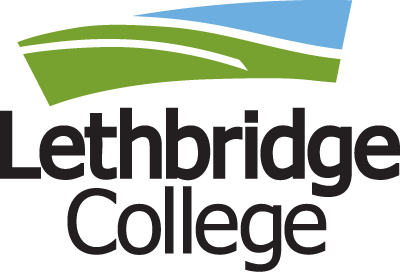As an important step showing its commitment to being a leader in reconciliation, hundreds of members of the Lethbridge College community witnessed the signing of the Buffalo Treaty in March at a ceremony that kicked off the college’s annual Stone Pipe Days celebration.
Lethbridge College was the first Canadian college to sign the treaty, which was created to honour, recognize and revitalize the time immemorial relationship Indigenous people have with the buffalo (iinii), and to commit to working so that people and buffalo will once again live together to nurture each other culturally and spiritually. The treaty was first signed in 2014 by four First Nations in Canada and four Indigenous tribes in the United States on the Blackfeet Reservation near Browning, Mont., and it was the first treaty signed among First Nations in more than 100 years.
“The signing of this treaty is an historic opportunity for the college to showcase its leadership in reconciliation,” says Lowell Yellowhorn (Spiitawakasi/Tall Deer), Lethbridge College’s Indigenous Services manager. “In leaving our names on this document as witnesses to this agreement, we are committing to building relationships with other signatories and working alongside them in pursuit of a common – and important – goal.”
The event drew hundreds of students, employees, alumni and community members to the gym, where they were treated to an historic overview of the treaty by Dr. Leroy Little Bear (Iikaisskini/Low Horn), one of Canada’s most respected Indigenous academic voices. He is also the Vice-Provost, Iniskim Indigenous Relations at the University of Lethbridge, was made an Officer of the Order of Canada in 2019, and was awarded the Alberta Order of Excellence in 2016. “The signing by Lethbridge College is a fantastic cause for celebration,” says Little Bear. “When we see others joining, it’s very fulfilling.” At the end of the ceremony, in an act many described as powerful and full of meaning, each person added their names to the treaty, waiting patiently for nearly an hour, in two lines that stretched across the gym.
“These are the moments when we weave together traditional knowledge and learning with the future direction of the college,” says Dr. Samantha Lenci, Lethbridge College’s Provost and Vice President – Academic. “Signing our names, as individuals and as a community, is a way of recognizing both where we are and who we want to be.”
Lenci adds that the signing of the treaty fits well into the promise that was made when the college received its Blackfoot name Ohkotoki’aahkkoiyiiniimaan, which means Stone Pipe, in 2017. “The offering of a stone pipe is a promise or a peace bond made with the honesty and integrity needed to fulfil the commitment,” she says. “It reflects our promise and commitment to our students, our college community and all Indigenous communities. We understand that our name comes with a responsibility, and every day, we try to live up to that promise and commitment.”
Two articles of the treaty are especially important to the work happening at Lethbridge College – Article V (Education) and Article VI (Research). Lethbridge College President and CEO Dr. Brad Donaldson explains that coming together during Stone Pipe Days celebration and being the first Canadian college to sign this historic treaty is one way the college community can show its ongoing commitment to realizing the buffalo ways for future generations. “In signing the treaty,” he says, “we are committing to transferring knowledge, developing programs, and perpetuating knowledge-gathering and knowledge-sharing to younger generations.”
At the end of the event, hundreds of students, employees, alumni and friends of the college had added their names to the treaty as witnesses – the original of which can be viewed at Whyte Museum of the Canadian Rockies Archive and Library. Learn more about the treaty at buffalotreaty.com.

Excerpts from the Buffalo Treaty
Creator gave us many gifts and teachings to survive this world. One of those teachings is everything is interrelated. In the Indian practice, the interrelated world is realized through Treaty-making with all my relations.
Relationship to buffalo
Since time immemorial, hundreds of generations of the first peoples of the First Nations of North America have come and gone since before and after the melting of the glaciers that covered North America. For those generations, buffalo has been our relative. Buffalo is part of us and we are part of buffalo culturally, materially and spiritually. Our ongoing relationship is so close and so embodied in us that Buffalo is the essence of our holistic eco-cultural life-ways.
Article V – Education
Recognizing and continuing to embody all the teaching we have received from buffalo, we, collectively, agree to develop programs revolving around buffalo as a means of transferring intergenerational knowledge to the younger and future generations and sharing knowledge amongst our respective nations.
Article VI – Research
Realizing that learning is a life-long process, we, collectively, agree to perpetuate knowledge-gathering and knowledge-sharing according to our customs and inherent authorities revolving around buffalo that do not violate our traditional ethical standards as a means to expand our knowledge base regarding the environment, wildlife, plant life, water, and the role buffalo played in the history, spiritual, economic, and social life of our nations.



